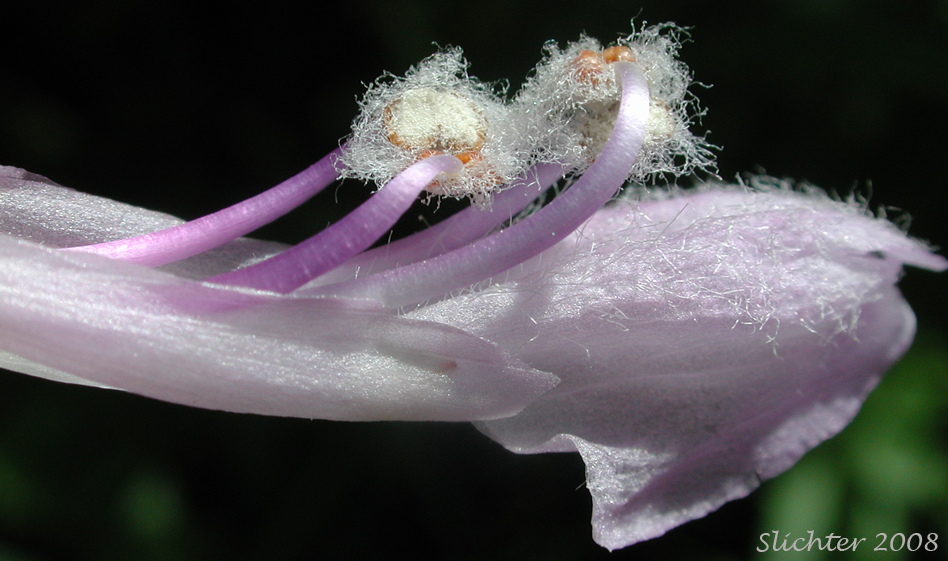 The photo at right shows a close-up of the woolly anthers and numerous hairs on the lower lip of the corolla of Barrett's penstemon. Photographed in the author's garden in Gresham, OR...........May 18, 2008.
The photo at right shows a close-up of the woolly anthers and numerous hairs on the lower lip of the corolla of Barrett's penstemon. Photographed in the author's garden in Gresham, OR...........May 18, 2008.
Barrett's penstemon is a showy, shrubby penstemon with a limited range. It is found entirely within a ten mile stretch of the Columbia River Gorge and along the upper Klickitat River. It was discovered by, and named after Almeta Hodge Barrett of Hood River, OR who discovered it prior to 1886.
Barrett's penstemon forms dense clumps of stems and leaves. The shrubby stems rise from 15-40 cm in length and tend to spread along the ground forming a loose mat. The leaves are smooth and glaucous (blue-green) with short petioles on the lower stems and base of the plant. These are lanceolate to elliptic in shape and up to 2.5 cm wide with entire to toothed margins. The stem leaves are reduced in size with sessile to clasping bases.
The inflorescence is a raceme or panicle with 2 flowers per cyme. The calyx is 5-8 mm long with ovate sepals tapered to narrow points. The tubular corolla ranges from 2.5-3.8 cm long and 1 cm wide at the mouth. The tube is ridged on top and has 2 ridges on the palate (at the throat of the lower lip). The flower is lilac or rose-purple and the palate is abundantly white haired. The anther sacs are densely white-woolly.
With good drainage and placed in a rock wall or between several good sized stones, this attractive plant should survive in the rock garden fairly easily. It can be obtained from a number of reputable dealers in Oregon and Washington.
Barrett's penstemon is found on dry, rocky ground, especially on basalt cliffs and talus slopes.
Barrett's penstemon is found between the elevations of 100'-1000' between Hood River, OR and Lyle, WA and also on cliffs and shoreline above the Klickitat River in south-central Washington.